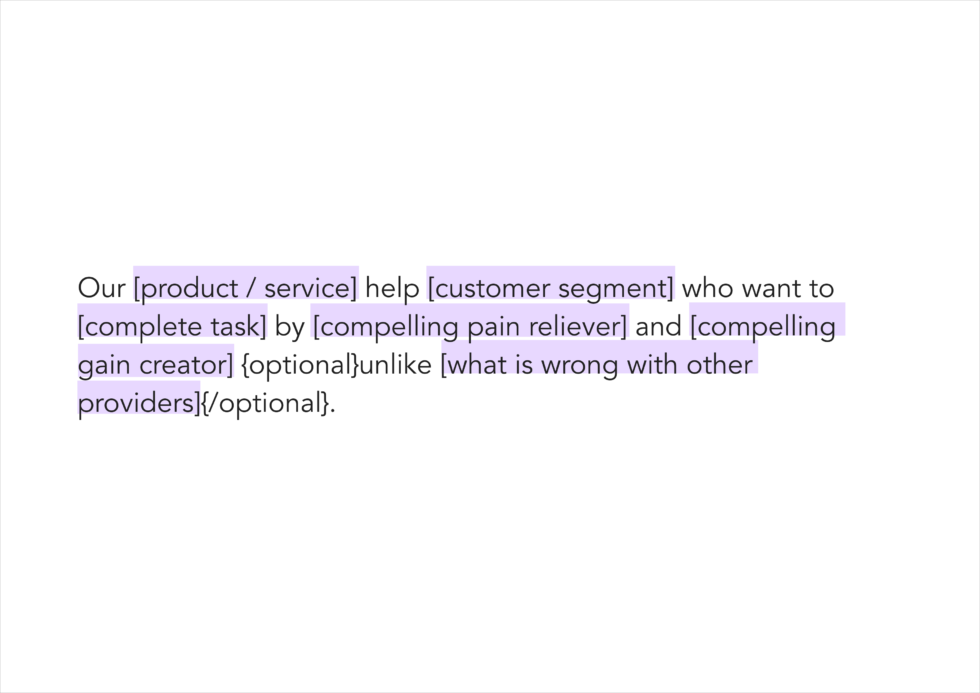How to create a value proposition
A good value proposition connects with the customer by showing them how your company or product solves problems for them—and why you’re the best option to solve those problems. It explains why this customer would choose you over competitors who offer similar solutions but don’t have all of these other great qualities that set you apart from everyone else in the market.
You may not have thought about this before, but every time someone buys something, they’re making choices based on whether or not they believe they’ll get more value from one product than another (even if they don’t realise it). Your job as a marketer is to show people why they should choose yours instead of any other options out there so they’ll feel confident buying from you—and keep coming back again and again!

Photo by Patrick Perkins
What a value proposition is and isn’t
When creating a Value proposition, you’ll often find yourself bouncing between what it should be and what it isn’t. Contrary to popular belief, a value proposition is not a mission statement. A mission statement typically focuses on what your business does and how it can help its customers. A value proposition describes exactly how your business will help its specific target audience achieve its goals in a way no one else can.
The first step toward writing an effective value proposition is understanding who your target audience is and what kind of information will matter most to them when making their purchasing decision
- What is it about your company or business that sets you apart from the competition?
- Is it something that other companies don’t offer?
- What is it that you can provide to prospects and customers—and not just any prospects or customers, but those who are specifically looking for what you have to offer?
How to write a value proposition.
Once you’ve identified your target audience, then comes the fun part: writing. You want to write in plain language so that anyone can understand what sets your company apart. At the same time, though, make sure there’s enough detail for people to know exactly why they need your product or service.
Start by breaking down your company/brand:
- Products and services
- Customer Segments
- Tasks
- Compelling Pain Relievers
- Compelling Gain Creators
Create a framework for your value proposition
Using your breakdown, you can arrange each value proposition for each product or service into a framework that will enable you to start to arrange formed sentences.

Value Proposition Construction from PRISM Brand Workshop
These formed sentences are not the finished article, but you can use these sentences as a starting point where you can begin adding personality and simplifying your message.
Don’t forget to address how you’re different.
You should be able to identify at least three ways in which your company is unique and better than the competition. Don’t be afraid to use concrete examples here; they make the difference between a value proposition that sounds good and one that actually impresses potential customers.
Customers often use these differentiators as key signals as to when they will buy it, and when they will not. If a customer can easily justify to others why they should buy with you, and you’ve made this easy for them, you are halfway to selling your product or service online.
Speak directly to your site visitors.
- Use the words and phrases that will resonate the most with your target audience.
- Choose a tone that speaks to your customers that would be the tone you would use in a face to face interaction.
- Be specific and clear in your messaging.
- Be concise, but not too short.
Let your brand’s personality shine through.
Your brand’s personality is all about the unique qualities that make your business, well, you! It’s the combination of your values and beliefs, plus how you express them through the way you talk, behave and act. Your brand voice is just as important as your brand personality when it comes to conveying that difference. The goal is to find a tone between being too formal or too casual; if it sounds like someone who doesn’t care much about their products or services, they’re probably not going to buy anything from them either.
Keep it short and to the point.
The value proposition should be short and to the point. It should not use jargon or industry lingo that most people don’t understand, nor should it use long sentences. Remember, we are trying to talk to the customer about our business the way you would in a face-to-face interaction.
The language used in your value proposition should be accessible to your target audience — no complicated words or overly complicated expressions, please! You want to sound confident and knowledgeable, so avoid being afraid to repeat yourself. It’s okay if your value prop is a little repetitive; in fact, it’s better than okay: it means you’ve done a good job of sticking with one core idea throughout all different variations of your message.
A clear and concise value proposition will help you stand out from competitors and immediately convey what sets you apart from others.
Your value proposition should be brief, focused, and consistent across all platforms. It should be no longer than three sentences and contain the following elements:
- An overview of your business’s core service or product offering
- A benefit for the customer (e.g., “we can save you time” or “we make [insert service] easy to use”)
- A call to action (e.g., “contact us today” or “start a free trial now!”).
The value proposition is an essential tool for any business, but it’s especially important for those who sell online. If you’re creating a new website or revamping your current one, don’t forget to consider how you can use this concept to make your offering stand out from competitors and immediately convey what sets you apart from others. Creating a value proposition that resonates with customers will help them choose your business over others.



